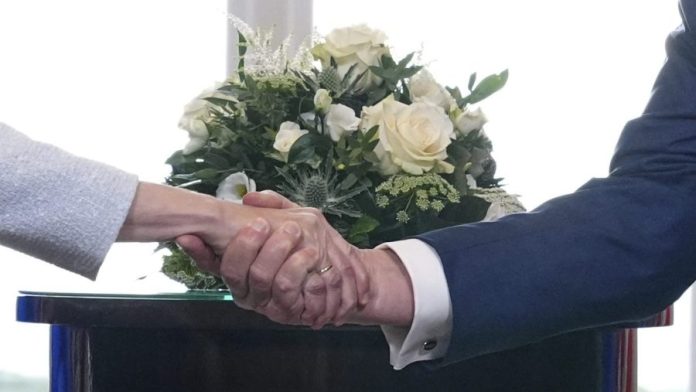
After months of delays, President Trump’s long-awaited global tariffs are slated to take effect at the end of this week.
Trump on April 2 announced “reciprocal” tariffs on dozens of other countries, using trade deficits to help calculate the tariff rate. But a week later, he lowered those rates to 10 percent for three months as markets reacted negatively, allowing time for countries to negotiate.
As the 90-day window was nearing its end earlier this month, Trump sent letters to countries informing them of the new “reciprocal” rate that, he said, would take effect Aug. 1.
The White House has managed to secure some significant trade deals since the president’s unprecedented sweeping tariffs were first announced in the spring.
Trump on Sunday announced a trade deal with the European Union, setting tariffs at 15 percent for European goods, including automobiles — lower than the 30 percent rate Trump had threatened to impose on the EU next month.
The EU will purchase $750 billion worth of energy from the U.S. as part of the deal, Trump announced, and agreed to invest in the U.S. $600 billion more than the current investments for other goods.
Trump similarly reached a deal last week with Japan, setting a 15 percent tariff on Japanese goods — lower than lower the 25 percent tariff Trump had threatened to impose. Also in that deal, Trump said Japan would invest $550 billion in projects in the U.S. and would open its markets to U.S. automobiles, rice and other agricultural products.
The Philippines agreed to a trade deal with the United States that would lower U.S. tariffs on its exports to from 20 percent to 19 percent, Trump announced last week. Trump had originally set a 17 percent duty on imports from the Philippines in April before warning that figure would rise to 20 percent last month.
An agreement with Indonesia would also set a tariff rate of 19 percent on its imports.
Trump announced an agreement with the United Kingdom in early May, in what is considered the first major deal struck since the president announced his sweeping tariffs in April. That agreement set the tariff rate at 10 percent, down from 25 percent.
The U.K. is allowed to export 100,000 cars to the U.S. at a 10-percent tariff rate, as opposed to the 25-percent rate announced March 26, marking a win for the British car industry. Trump and British Prime Minister Keir Starmer are expected to talk about the implementation of that deal when they meet Monday in Scotland.
The US and China announced in late May the contours of a deal to stave off a trade war between the two countries temporarily. The U.S. reduced its tariff rate from 145 percent to 30 percent, and China reduced its rate from 125 percent to 10 percent.
Treasury Secretary Scott Bessent and Chinese Vice Premier He Lifeng are set to hold talks Monday for the third time this year, with The Associated Press reporting that China is expected to press for the U.S. to remove its 20 percent tariff related to fentanyl. Both countries have an additional 10 percent baseline tariff in place.
The White House sent dozens of letters this month informing countries of what they should expect their tariff rate to be, come Aug. 1.
Trump has insisted he would not further extend the tariff deadline, but Commerce Secretary Howard Lutnick said Sunday that the president would be open to continuing discussions even after the tariffs are in place.
For countries that have yet to secure a deal with the U.S., here are the tariff rates set to take effect on Aug. 1:
- Canada: 35 percent
- Mexico: 30 percent
- South Korea: 25 percent
- South Africa: 30 percent
- Kazakhstan: 25 percent
- Laos: 40 percent
- Malaysia: 25 percent
- Myanmar: 40 percent
- Tunisia: 25 percent
- Bosnia and Herzegovina: 30 percent
- Bangladesh: 35 percent
- Serbia: 35 percent
- Cambodia: 36 percent
- Thailand: 36 percent
- Libya: 30 percent
- Iraq: 30 percent
- Algeria: 30 percent
- Moldova: 25 percent
- Brunei: 25 percent
- Sri Lanka: 30 percent
- Brazil: 50 percent

